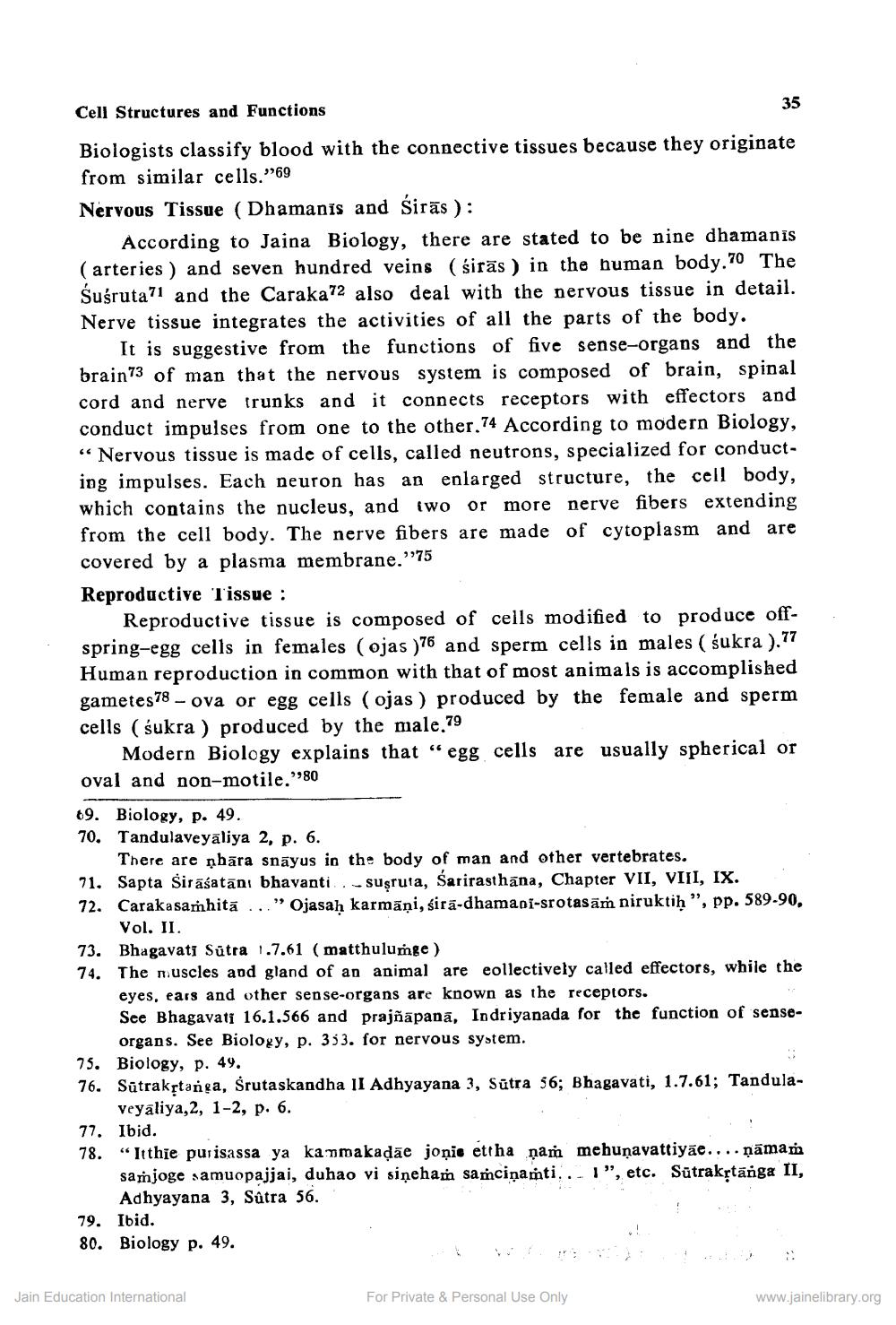________________
Cell Structures and Functions
35
Biologists classify blood with the connective tissues because they originate from similar cells."69 Nervous Tissue (Dhamanis and Śirās ):
According to Jaina Biology, there are stated to be nine dhamanis ( arteries ) and seven hundred veins ( sirās ) in the human body.70 The Śuśruta 71 and the Caraka72 also deal with the nervous tissue in detail. Nerve tissue integrates the activities of all the parts of the body.
It is suggestive from the functions of five sense-organs and the brain73 of man that the nervous system is composed of brain, spinal cord and nerve trunks and it connects receptors with effectors and conduct impulses from one to the other.74 According to modern Biology, “Nervous tissue is made of cells, called neutrons, specialized for conducting impulses. Each neuron has an enlarged structure, the cell body, which contains the nucleus, and iwo or more nerve fibers extending from the cell body. The nerve fibers are made of cytoplasm and are covered by a plasma membrane.”'75 Reproductive Tissue :
Reproductive tissue is composed of cells modified to produce offspring-egg cells in females (ojas )76 and sperm cells in males ( śukra ).77 Human reproduction in common with that of most animals is accomplished gametes78 - ova or egg cells (ojas ) produced by the female and sperm cells ( sukra ) produced by the male 79
Modern Biology explains that “egg cells are usually spherical or oval and non-motile.”80 69. Biology, p. 49. 70. Tandulaveyaliya 2, p. 6.
There are nhāra snäyus in the body of man and other vertebrates. 71. Sapta Sirāśatāni bhavanti .- susruta, Sarirasthana, Chapter VII, VIII, IX. 72. Carakasaṁhitā ..." Ojasaḥ karmāņi, sira-dhamapi-srotasāṁ niruktiḥ ", pp. 589-90,
Vol. II. 73. Bhagavati Sūtra 1.7.61 (matthulumge ) 74. The muscles and gland of an animal are collectively called effectors, while the
eyes, ears and other sense-organs are known as the receptors. See Bhagavati 16.1.566 and prajñāpanā, Indriyanada for the function of senseorgans. See Biology, p. 313. for nervous system.
Biology, p. 49. 76. Sūtrakstanga, Srutaskandha II Adhyayana 3, Sūtra 56; Bhagavati, 1.7.61; Tandula
veyaliya,2, 1-2, p. 6. 77. Ibid. 78. “Itthie purisassa ya kaymakadāe jonie ettha ņam mehuņavattiyae.... naman
samjoge samuopajjai, duhao vi sineham samciņamti...1", etc. Sūtrakstānga II,
Adhyayana 3, Sútra 56. 79. Ibid. 80. Biology p. 49.
75. Bio
Jain Education International
For Private & Personal Use Only
www.jainelibrary.org




